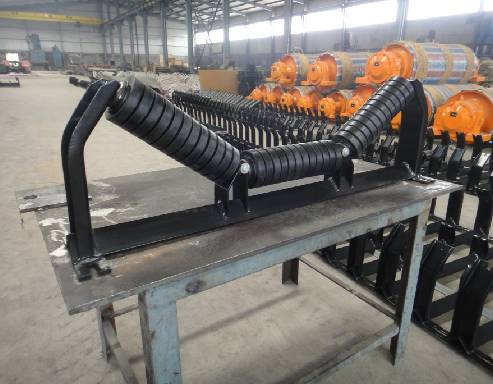 Afrikaans
Afrikaans  Albanian
Albanian  Amharic
Amharic  Arabic
Arabic  Armenian
Armenian  Azerbaijani
Azerbaijani  Basque
Basque  Belarusian
Belarusian  Bengali
Bengali  Bosnian
Bosnian  Bulgarian
Bulgarian  Catalan
Catalan  Cebuano
Cebuano  Corsican
Corsican  Croatian
Croatian  Czech
Czech  Danish
Danish  Dutch
Dutch  English
English  Esperanto
Esperanto  Estonian
Estonian  Finnish
Finnish  French
French  Frisian
Frisian  Galician
Galician  Georgian
Georgian  German
German  Greek
Greek  Gujarati
Gujarati  Haitian Creole
Haitian Creole  hausa
hausa  hawaiian
hawaiian  Hebrew
Hebrew  Hindi
Hindi  Miao
Miao  Hungarian
Hungarian  Icelandic
Icelandic  igbo
igbo  Indonesian
Indonesian  irish
irish  Italian
Italian  Japanese
Japanese  Javanese
Javanese  Kannada
Kannada  kazakh
kazakh  Khmer
Khmer  Rwandese
Rwandese  Korean
Korean  Kurdish
Kurdish  Kyrgyz
Kyrgyz  Lao
Lao  Latin
Latin  Latvian
Latvian  Lithuanian
Lithuanian  Luxembourgish
Luxembourgish  Macedonian
Macedonian  Malgashi
Malgashi  Malay
Malay  Malayalam
Malayalam  Maltese
Maltese  Maori
Maori  Marathi
Marathi  Mongolian
Mongolian  Myanmar
Myanmar  Nepali
Nepali  Norwegian
Norwegian  Norwegian
Norwegian  Occitan
Occitan  Pashto
Pashto  Persian
Persian  Polish
Polish  Portuguese
Portuguese  Punjabi
Punjabi  Romanian
Romanian  Russian
Russian  Samoan
Samoan  Scottish Gaelic
Scottish Gaelic  Serbian
Serbian  Sesotho
Sesotho  Shona
Shona  Sindhi
Sindhi  Sinhala
Sinhala  Slovak
Slovak  Slovenian
Slovenian  Somali
Somali  Spanish
Spanish  Sundanese
Sundanese  Swahili
Swahili  Swedish
Swedish  Tagalog
Tagalog  Tajik
Tajik  Tamil
Tamil  Tatar
Tatar  Telugu
Telugu  Thai
Thai  Turkish
Turkish  Turkmen
Turkmen  Ukrainian
Ukrainian  Urdu
Urdu  Uighur
Uighur  Uzbek
Uzbek  Vietnamese
Vietnamese  Welsh
Welsh  Bantu
Bantu  Yiddish
Yiddish  Yoruba
Yoruba  Zulu
Zulu conveyor idler types
Types of Conveyor Idlers
Conveyors are an essential component in various industries, facilitating the efficient movement of materials. Central to the operation of any conveyor system are its idlers, which support and guide the conveyor belt. The choice of idler type is crucial for optimizing performance, reducing maintenance, and extending the lifespan of the conveyor system. This article will explore the various types of conveyor idlers, their functions, and applications.
1. Standard Impact Idlers
Impact idlers are designed to cushion and support the conveyor belt when heavy materials are loaded onto it. These idlers are typically located at the loading zone, where the bulk materials hit the belt. Impact idlers feature a unique design with rubber discs or cushions that absorb shock, minimizing the stress on the belt and reducing wear and tear. This type of idler is crucial in industries like mining and quarrying, where heavy materials are common.
2. Carrier Idlers
Carrier idlers are the most common type of idlers used in conveyor systems. They support the conveyor belt and the load it carries. Carrier idlers come in various configurations, including standard, trough, and flat. Trough idlers, which have a V-shaped design, provide better load support and help align the belt. Carrier idlers are versatile and find applications in various sectors, including manufacturing, agriculture, and construction.
Return idlers are used to support the belt as it returns to the head pulley. These idlers help maintain the belt’s alignment and reduce energy consumption during the conveyor’s operation. Return idlers generally have a flat design, allowing the belt to glide smoothly over them. These idlers are essential for ensuring the long-term efficiency of a conveyor system.
conveyor idler types

4. Training Idlers
Training idlers play a critical role in keeping the conveyor belt properly aligned. Misalignment can lead to increased wear on the belt and components, resulting in costly downtime. Training idlers are often mounted at strategic points along the conveyor to correct the belt's path, ensuring it stays centered. These idlers can be equipped with various mechanisms, including self-aligning rollers, to facilitate belt alignment effectively.
5. Belt Support Idlers
Belt support idlers are designed to provide additional support to the conveyor belt and prevent sagging, especially under heavy loads. By maintaining the belt's shape, these idlers help improve the overall efficiency of the conveyor system. Belt support idlers are often used in long conveyor systems where material load may vary widely, allowing for consistent performance.
6. Specialized Idlers
In addition to the standard types, there are specialized idlers designed for specific applications. For instance, spiral idlers are used in steep incline applications, while self-cleaning idlers prevent material buildup, which can affect performance. Additionally, there are dust suppression idlers that integrate features to mitigate dust emissions in industries handling fine materials.
Conclusion
Choosing the right type of conveyor idler is vital for the system's overall efficiency and longevity. Each type of idler serves specific functions and is suited for particular applications. By understanding the different idler types, companies can optimize their conveyor systems to handle various materials effectively while minimizing maintenance costs. Ensuring the right selection not only enhances productivity but also contributes to a safer working environment. As industries evolve, new idler designs and technologies continue to emerge, promising even greater efficiency and performance for conveyor systems.
-
Revolutionizing Conveyor Reliability with Advanced Rubber Lagging PulleysNewsJul.22,2025
-
Powering Precision and Durability with Expert Manufacturers of Conveyor ComponentsNewsJul.22,2025
-
Optimizing Conveyor Systems with Advanced Conveyor AccessoriesNewsJul.22,2025
-
Maximize Conveyor Efficiency with Quality Conveyor Idler PulleysNewsJul.22,2025
-
Future-Proof Your Conveyor System with High-Performance Polyurethane RollerNewsJul.22,2025
-
Driving Efficiency Forward with Quality Idlers and RollersNewsJul.22,2025





























